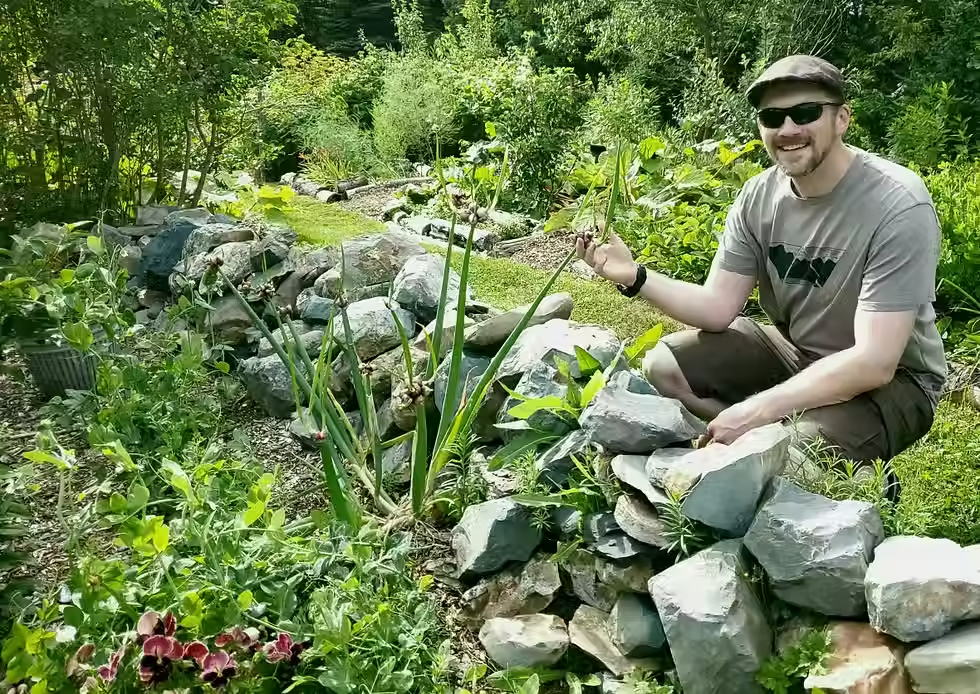What Is a Food Forest?
- Shawn Dawson
- May 1
- 3 min read
Updated: May 8

A food forest or forest garden is a designed space that combines trees with a diverse planting of edible plants (largely perennial) with the overall goal of mimicking nature.
Food forests are designed with multi-storied layers of plants, in a way similar to a natural forest, as opposed to the traditional method of monoculture farming of rows of crops.
The plants in a food forest work together to build natural relationships and create an environmentally friendly and sustainable food system.
This means combining trees, shrubs, flowers, herbs, and mushrooms, all planted together, to support each other and perform different roles in the food production system.
Their jobs include fertilizing the soil, attracting pollinators, providing shade, repelling pests, and transferring water, nutrients, and sugars to where they are needed.
THE EIGHT LAYERS OF A FOOD FOREST
1) CANOPY: The canopy or taller tree layer of a food forest is composed of trees that will be the tallest element once they are fully mature. This layer can include coniferous trees like Spruce trees also useful for their edible and nutrient rich branching tips in the spring. Deciduous trees like maple and birch may be planted for their sap, along with larger species of nut and fruit trees. Think of this layer as the back wall or border of your garden. If you are creating your food forest in a small residential backyard, you may not have room to include this layer in your garden without creating too much shade for the rest of your garden.
2) SUB-CANOPY: The Sub-Canopy or Large Shrub Layer will consist of lower dwarf and semi-dwarf fruit trees like pears, apples, cherries etc. A majority of these fruit trees can be used for this layer. If you are limited on space, this can become your taller canopy layer.
3) SHRUBS: The shrub layer will include plants that grow larger than herbaceous plants but smaller than trees. This layer can include various fruit or flowering bushes such as currants, raspberries, flowering quince etc.
4) HERBS: The next lower, herbaceous layer will consist of various culinary or medicinal herbs and leafy greens. Perennials are very useful for this. Plants in this layer will die back in the winter and regrow in the spring. A variety of different crops can be planted in this layer, and can include rhubarb, asparagus, garlic, basil, chamomile and the lists goes on. The plants in the herbaceous layer will include plants that are usually in your vegetable or herb garden.
5) GROUND COVER: The ground cover layer is made up of plants that grow close to the ground that will fill in the spaces where the herbaceous layer is not growing. This layer can act as a living mulch to keep out unwanted “weeds.” Some crops that can be used for this layer are strawberries, creeping thyme, nasturtiums, and oregano.
6) VERTICAL/CLIMBING LAYER: This layer will be made up of vining or climbing plants. This layer uses taller plants and trees as a ladder or trellis for support. This is a great way to conserve and utilize space in your garden without having to build fences or structures for the plants to climb. This element can include grapes, peas, beans, cucumbers, northern kiwis, hops and indeterminate varieties of tomatoes.
7) ROOT CROPS: The underground layer is basically anything that produces a root crop or tubers. Such crops include many plants from the allium family such as garlic, onions, ramps, and leeks, as well as tubers like Jerusalem artichokes and day lilies.
8) FUNGAL LAYER: The mycelial or fungal layer is made up of mycorrhizal threads, the actual bodies that produce mushrooms to form a symbiotic relationship with all the plants in the food forest. In a natural forest, if you dug into the soil, you would see that the soil is full of the white netting of mycelia. This network allows the other plants and trees to exchange nutrients, water and sugars.
By mulching your garden you can naturally introduce mushrooms that will help your plants be healthier and develop a stronger root system. You can also introduce edible mushrooms that will naturalize and return each year. The best example for this type of use are wine cap mushrooms.
.png)


Comments